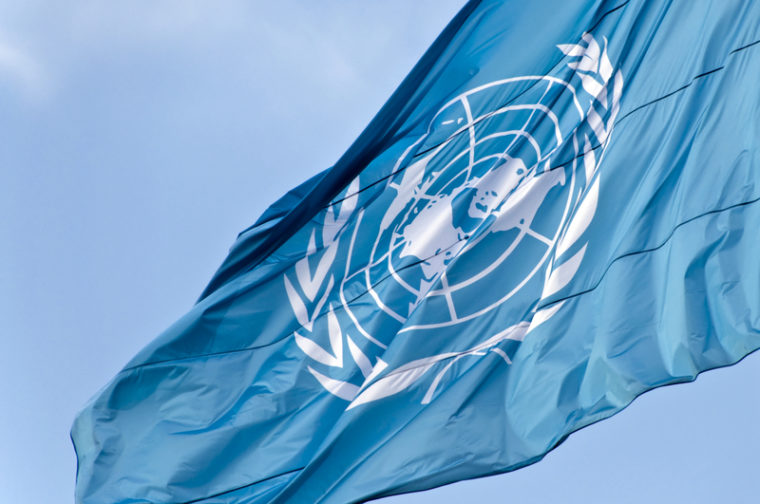
In the latest update after 30 days of war in Gaza, the United Nations humanitarian office (OCHA) reported that one Israeli soldier was reportedly killed in Gaza. That brought the total number of soldiers killed since the start of ground operations to 29, according to Israeli sources.
The burden on Gaza’s people is grim despite US Secretary of State Anthony Blinken’s strenuous shuttle diplomacy. It followed the barbaric Hamas attack inside Israel on October 7, when the terrorist group killed at least 1,400 Israelis and kidnapped about 240 persons including Americans as hostages now hidden inside Gaza.
On November 5, the total reported fatality toll in Gaza since the start of the hostilities stood at 9,770, including 4,008 children and 2,550 women, according to Gaza’s health ministry cited by OCHA.
About 2,260 others are reported missing in Gaza, including 1,270 children. Most are presumed to be trapped under rubble. On average, 134 children have been killed in Gaza every day since the start of the hostilities, based on the health ministry figures.
Blinken has also been shuttling from meeting to meeting with Israeli, Qatari, Jordanian and Egyptian leaders to obtain exits through the Rafah crossing to Egypt of American and other dual nationals blocked in Gaza.
He is working persistently to obtain transfer of seriously wounded persons for medical treatment to Egypt and, above all, for the release of all American and other hostages kidnapped by Hamas.
But his is an uphill struggle. No exits of dual nationals or patients from Gaza to Egypt through the Rafah crossing were recorded on 5 November, for the second consecutive day. But more than 1,100 people reportedly crossed from Gaza to Egypt on November 2 and 3, according to the OCHA update.
Hamas, Israel and Egypt have failed to reach an agreement on the safe evacuation of patients from northern Gaza, following an attack on an ambulance convoy on its way from Gaza city to Rafah on November 3.
In an effort to avoid civilian casualties, the Israeli military again called on the people of Gaza city and northern Gaza to move southwards on November 5. But UN monitoring suggests that less than 2,000 moved probably because of heavy damage to the two main traffic arteries and fear of being hit while on the move.
Another constraint is the lack of information and contact with other people due to the limited connectivity to cellular networks and the internet.
The Israeli military says that Hamas has been physically hindering people’s movement to the south.
Blinken has also been working urgently to push more humanitarian supplies into Gaza from the Rafah crossing. On 5 November, a limited number of trucks carrying humanitarian supplies crossed from Egypt into Gaza, the OCHA update said.
Since 21 October, at least 451 trucks have entered Gaza. Of these, at least 158 trucks carried food, 102 carried health supplies, 44 carried water or hygiene products, 32 carried non-food items, and eight carried nutrition supplies, and the remainder carried mixed cargo.
On normal days before October 7, almost 500 trucks entered Gaza every day with supplies for the enclave. Prior to hostilities, the main entry point for goods was the Kerem Shalom crossing with Israel. It remains closed, as does the Israeli pedestrian crossing of Erez.
About 1.5 million people in Gaza are internally displaced. Of those, some 717,000 are sheltering in 149 UN relief agency (UNRWA) facilities, 122,000 in hospitals, churches, and public buildings, 110,000 in 89 non-UNRWA schools, and the remainder with host families, the OCHA update reported.
Over 530,000 people are sheltering in 92 UNRWA facilities in the south and the overcrowded shelters are unable to accept new arrivals. Many people are sleeping in the streets, near UNRWA premises.
An estimated 160,000 displaced people are housed in 57 UNRWA facilities in Gaza city and north Gaza. But UNRWA is no longer able to provide services there and does not have accurate information on people’s needs and conditions since the Israeli evacuation order on 12 October.
Several cases of acute respiratory infections, diarrhea and chicken pox have been reported among people taking refuge at UNRWA shelters.
Gaza remains under a full electricity blackout since 11 October, following Israel’s halt of its power and fuel supply, which caused Gaza’s sole power plant to shut down.
The entry of fuel, which is desperately needed to operate electricity generators to run life-saving equipment, remains banned by the Israeli authorities.
OCHA reports that multiple solar panels on the roofs of standing buildings, particularly in Gaza city, have reportedly been destroyed in the past few days during Israeli bombardments.
Affected facilities include Shifa and Nasser hospitals, several water wells, and bakeries. This has eliminated one of the remaining sources of energy, which is not dependent on fuel.
Since 3 November, the main electricity generators at Shifa Hospital in Gaza city and the Indonesian Hospital in North Gaza have reportedly stopped operating due to the lack of fuel. Both hospitals operate secondary, smaller generators, which provide only a few hours of electricity a day for the most critical services.
Since the start of hostilities, 14 out of 35 hospitals with inpatient capacities have stopped functioning and 51 (71 per cent) of all primary care facilities across Gaza (72) have shut down due to damage or lack of fuel.
Hundreds of thousands of residents in Gaza city and the North Gaza governorate are facing a severe water shortage, following the shutdown of all municipal water wells due to the lack of fuel, alongside the halt of water trucking activities, the OCHA update said.
This situation raises concerns of dehydration and waterborne diseases due to water consumption from unsafe sources. But precise assessment is uncertain due to hostilities and restrictions on access to affected areas, it added.
















